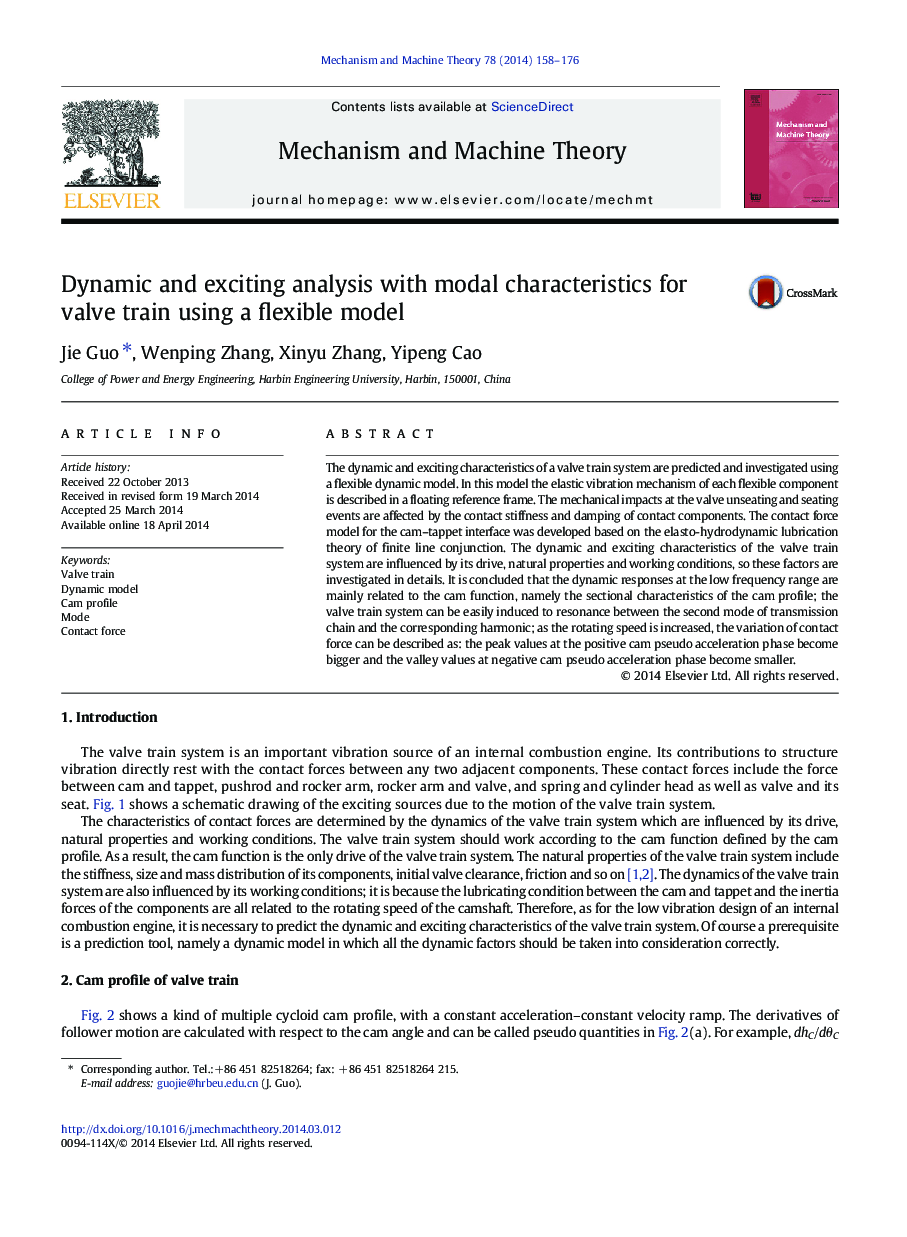| Article ID | Journal | Published Year | Pages | File Type |
|---|---|---|---|---|
| 799655 | Mechanism and Machine Theory | 2014 | 19 Pages |
•The dynamic responses of valve train are predicted by a flexible model.•The dynamics are mainly related to the sectional characteristics of cam profile.•The valve train can be easily induced to resonance by a certain harmonic.
The dynamic and exciting characteristics of a valve train system are predicted and investigated using a flexible dynamic model. In this model the elastic vibration mechanism of each flexible component is described in a floating reference frame. The mechanical impacts at the valve unseating and seating events are affected by the contact stiffness and damping of contact components. The contact force model for the cam–tappet interface was developed based on the elasto-hydrodynamic lubrication theory of finite line conjunction. The dynamic and exciting characteristics of the valve train system are influenced by its drive, natural properties and working conditions, so these factors are investigated in details. It is concluded that the dynamic responses at the low frequency range are mainly related to the cam function, namely the sectional characteristics of the cam profile; the valve train system can be easily induced to resonance between the second mode of transmission chain and the corresponding harmonic; as the rotating speed is increased, the variation of contact force can be described as: the peak values at the positive cam pseudo acceleration phase become bigger and the valley values at negative cam pseudo acceleration phase become smaller.
